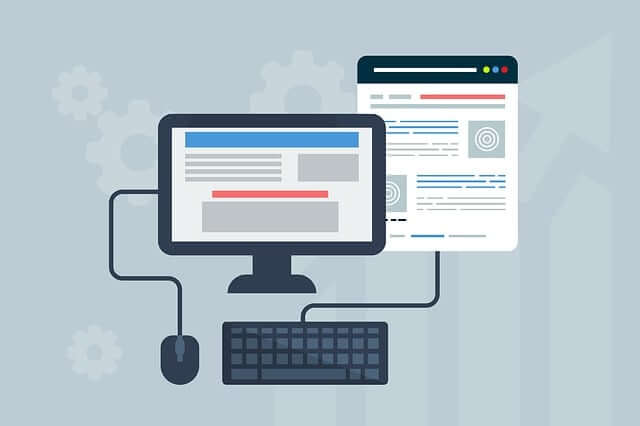
Integrating machine learning (ML) models into mobile apps marks a progressive advancement in the app development industry. Which offers numerous opportunities to enhance user experiences and functionality.
However, the incorporation of ML into mobile apps is transformative, allowing devices to perceive, realize, and make decisions similar to human-like intelligence. Also, it empowers apps to recognize patterns, analyze data, and generate insights.
Machine learning, with its capacity to decipher patterns from vast datasets, has transcended traditional computing boundaries. The convergence of ML with mobile apps has indicated as a new era, offering unparalleled opportunities to developers, businesses, and end-users alike.
However, the process of seamlessly integrating ML models into mobile apps necessitates a nuanced approach. It involves navigating through model selection, optimization for mobile deployment, and choosing between on-device or cloud-based integration methodologies.
But keep in mind that you’ll require cloud consulting services or a mobile app development agency to integrate machine learning into your dream project.
In this blog, we will explore the benefits of infusing Machine learning models in apps, and the process to integrate them.
Understanding Machine Learning
Machine learning stands as the core of modern artificial intelligence, allowing computers to learn from data without obvious programming.
Through sophisticated algorithms, machines recognize patterns, make predictions, and continuously refine their performance based on experiences.
Techniques like regression, classification, and clustering empower machines to predict outcomes, categorize information, and group similar data points. Applications span industries, including healthcare for disease prediction, finance for fraud detection, and technology for language translation and image recognition.
As it evolves, machine learning fosters groundbreaking advancements, transforming how we analyze information, make decisions, and innovate across various domains.
Importance and benefits of integrating ML models into Mobile Apps
Businesses need to integrate machine learning (ML) models into mobile apps offering a multitude of important benefits that significantly enhance user experiences.
Here are some key points highlighting their importance:
Personalization and User Engagement
First of all, integrating ML allows apps to tailor content and interactions based on user data, which boosts engagement by delivering personalized experiences.
It fosters a stronger connection between users and the app through customized recommendations and adaptive interfaces.
Increased User Assistance
ML-powered assistants in apps comprehend natural language, providing personalized and contextually relevant support. This feature significantly boosts user interaction and assistance, offering intuitive guidance within the app.
Predictive Capabilities
ML-driven predictive models anticipate user preferences, behaviors, and actions, improving app usability by offering proactive suggestions and streamlining user experiences based on suggested needs.
Improved Decision-Making
Real-time analysis by ML models empowers users and businesses within apps to make data-driven decisions. They provide insights, analytics, and recommendations that help in informed decision-making, increasing the app’s utility.
Optimized User Interfaces
ML-based app interfaces alter user behaviors and preferences, optimizing layouts and suggesting actions. This enhances the overall user experience by tailoring the interface for efficiency and ease of use.
Efficient Search and Content Discovery
ML enhances search accuracy, helping users discover relevant content, products, or services efficiently within the app. It optimizes search functionalities for better results.
Automation and Task Optimization
ML automates repetitive tasks, improving app efficiency by simplifying workflows and optimizing processes. This streamlining boosts user productivity within the app.
Offline Functionality
On-device ML enables certain app functionalities to work without constant internet connectivity. This ensures a smoother user experience in areas with limited or no network access, allowing the app to remain functional offline.
Security and Fraud Detection
ML models detect differences and patterns within app activities, bolstering security measures. This helps in identifying and preventing potential threats or fraudulent activities, ensuring a secure user experience within the app.
How to Deploy Machine Learning Model in Android Apps and iOS apps?
Deploying machine learning models in Android and iOS apps involves several steps. Here’s a general outline of the process for both platforms:
For Android Apps:
Choose the Machine Learning Framework
Selecting the right machine learning framework for Android is crucial such as TensorFlow Lite, which is a popular choice due to its efficiency in running models on mobile devices. It provides tools to convert and optimize models for mobile deployment.
Alternatively, ML Kit by Google offers a simplified API for common machine learning tasks like image labeling, text recognition, and face detection, making it user-friendly for developers.
Train and Optimize the Model
During model development, consider the constraints of mobile devices, such as limited processing power and memory. You need to optimize the model architecture, possibly using techniques like quantization or pruning to reduce its size without compromising accuracy.
Moreover, train the model on data representative of the target environment to ensure optimal performance on mobile devices.
Convert the Model to a Mobile-Compatible Format
After training, convert the model to a format compatible with Android devices, like TensorFlow Lite’s .tflite format. This conversion reduces the model’s size and makes it suitable for deployment on mobile devices while maintaining inference accuracy.
Integrate the Model into the Android App
Incorporate the converted model file (.tflite) into the Android app’s assets or resources directory. Use TensorFlow Lite’s Java or Kotlin APIs to load the model within the app.
This involves initializing the interpreter, feeding input data, and obtaining output predictions from the model.
Preprocess Input Data and Handle Model Outputs
Implement preprocessing steps for input data within the app to ensure it meets the model’s requirements. For instance, if the model expects normalized input, perform normalization on the input data.
Then, handle model outputs by interpreting the predictions and integrating them with the app’s functionality or UI elements.
Test and Validate
Thoroughly test the model’s integration within the Android app and test across various devices and Android OS versions to ensure consistent behavior, accuracy, and performance. Debug any issues and optimize as needed to deliver a smooth user experience.
For iOS Apps
Select the Machine Learning Framework
For iOS apps, Core ML is a powerful framework developed by Apple that allows easy integration of machine learning models into apps. Core ML supports various machine learning model types and offers tools for conversion and integration within Xcode.
Train and Optimize the Model
Similar to Android, optimize the machine learning model for deployment on iOS devices. Consider constraints like limited resources and optimize the model’s architecture and size while maintaining performance. Also, train the model on relevant data to ensure accurate predictions on iOS devices.
Convert the Model to Core ML Format
If the model is developed using TensorFlow or another framework, convert it to Core ML format (.mlmodel) using conversion tools provided by the framework or third-party converters. This conversion ensures compatibility with Core ML and optimizes the model for iOS deployment.
Integrate the Model into the iOS App
To integrate the model into the iOS app, start by adding the converted Core ML model file to the Xcode project. This involves importing the model file (.mlmodel) into the project’s assets or resources.
Once the model is added to the project, utilize Core ML APIs available in Swift or Objective-C to load and execute the model within the app. This includes initializing the Core ML model instance, providing input data in the required format, and processing the output predictions generated by the model.
This typically includes preprocessing input data, passing it to the model for inference, and interpreting the model’s output to display or use the predictions within the app’s functionalities.
Preprocess Input Data and Handle Model Outputs
Prepare input data as required by the model within the iOS app, and then implement preprocessing steps such as normalization or feature scaling.
Handle model outputs by interpreting predictions and integrating them into the app’s functionality or user interface.
Test and Validate
Thoroughly test the model’s integration in the iOS app, and test across different iOS devices and versions to ensure consistent behavior, accuracy, and performance. Sort out any issues and fine-tune the integration to enhance user experience.
You can achieve all of these properties in your application if you hire a reliable mobile app development company that has a good track record in building machine learning projects.
We suggest you to look out for the rating and reviews sections for a clearer idea.
Conclusion
However, it’s not a simple process to integrate ML into apps, it requires careful approach that encompasses several critical stages.
From selecting the right machine learning framework to optimizing, integrating, and testing the model within the mobile app, the process demands careful consideration of various factors, so you need to consider a reputable app development company to streamline your processes. .
Hence, a successful integration ensures that the machine learning model adds to the app’s functionalities seamlessly, enhancing the user experience while delivering accurate and efficient predictions or outcomes.
RELATED POSTS
View all



